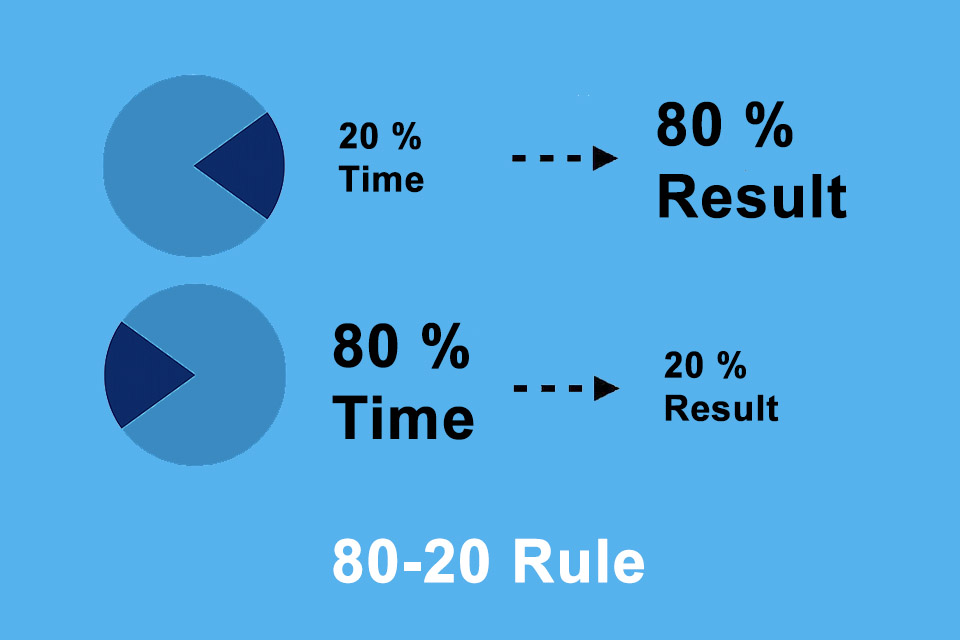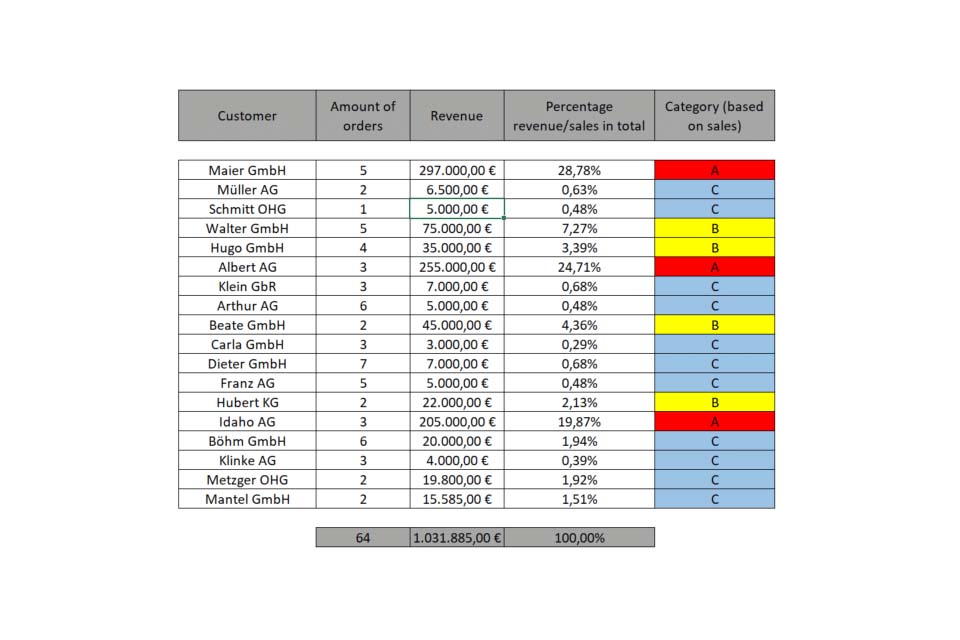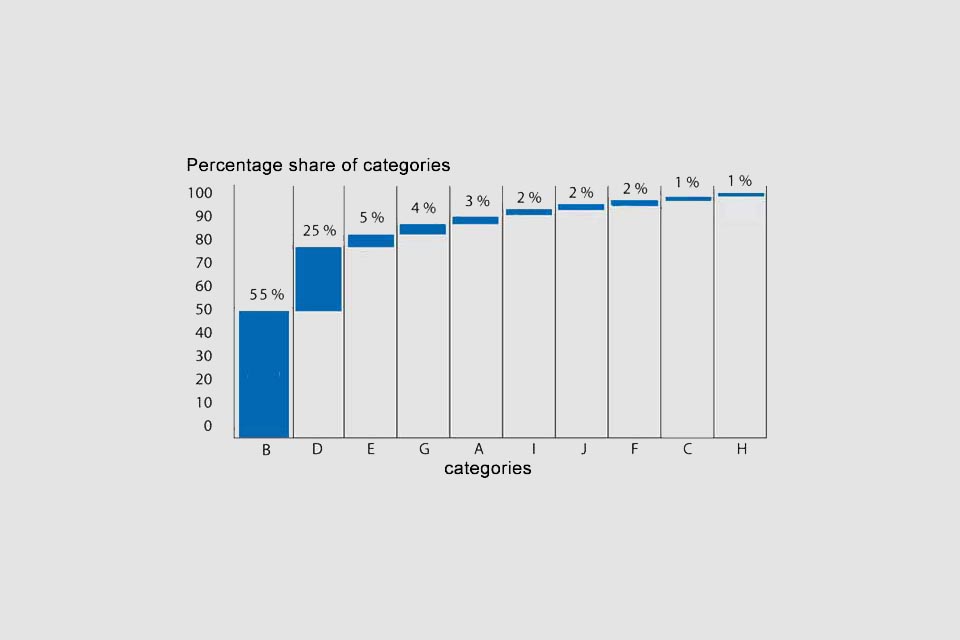What is the 80-20 Rule?
Smartpedia: The 80-20 rule (Pareto principle) states that a small number of high values contribute more to the total than a large number of small values.
80-20 rule – small effort, big effect
The 80-20 rule goes back to the Italian engineer, economist and sociologist Vilfredo Pareto¹ and is therefore also called the Pareto principle or Pareto effect. It states that a small number of high values of a defined set of values contributes more to its total value than a high number of small values. The basis of this insight is an observation by Vilfredo Pareto. In 1906, he determined that 80% of land ownership in Italy was distributed among about 20% of the population and concluded from this that banks should concentrate on the 20% of the population in order to increase their profits.
The Pareto principle in practice
Today, the 80-20 rule or the Pareto principle is applied to many areas of life and business:
- If a company generates 80% of its sales with 20% of its products, it should improve the margin on these products.
- 80% of its turnover is generated by a company with 20% of its customers. (Here the ABC analysis could help in weighting the customers.)
- 80% of the tasks can be done with 20% of the effort. (A thought, which can be important for the personal time planning.)
- 80% of software users use only 20% of the available functionality.
The 80-20 rule therefore essentially says nothing other than “small input, big outcome” oder “small operation, big impact”: 80% of the results are achieved in 20% of the time, but only 20% of the results in 80% of the time.
It is important to realize that the stake and the profit are not the same, so the numbers cannot simply be added together. The Pareto principle only says that 20 percent of the input can be responsible for 80 percent of the return. Other number combinations such as 80-10 or 90-20 are also possible. This becomes particularly clear with the representation of the Pareto distribution or the Pareto chart: 80-20 is only one point on a curve.
80 or 100 per cent?
It is important not to invert the causality of the 80-20 rule. Even when it comes to concentrating on the 20% bet to obtain 80% of the profit, this does not mean that the remaining percentages are unimportant and should be ignored. For example, developing a rocket or digging a tunnel should always deliver 100% of the expected results. Correctly applied, the 80-20 rule or Pareto principle says that a lot of time can be saved by concentrating on what is important and necessary, unless it is a matter of delivering “perfect”, i.e. 100% solutions.
Impulse to discuss
Notes:
If you like the article or would like to discuss it, please feel free to share it in your network. And if you have any comments, please do not hesitate to send us a message.
[1] Information about Vilfredo Pareto
Here you can find an article about perfectionism and procrastination.
And here you will find additional information from our Smartpedia section:



